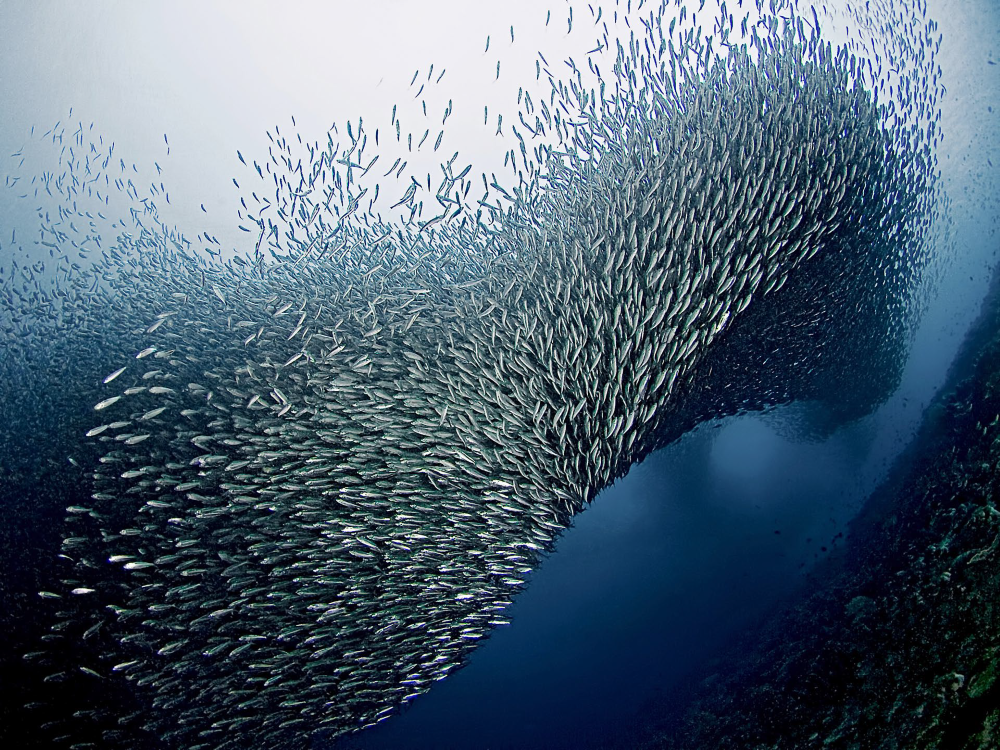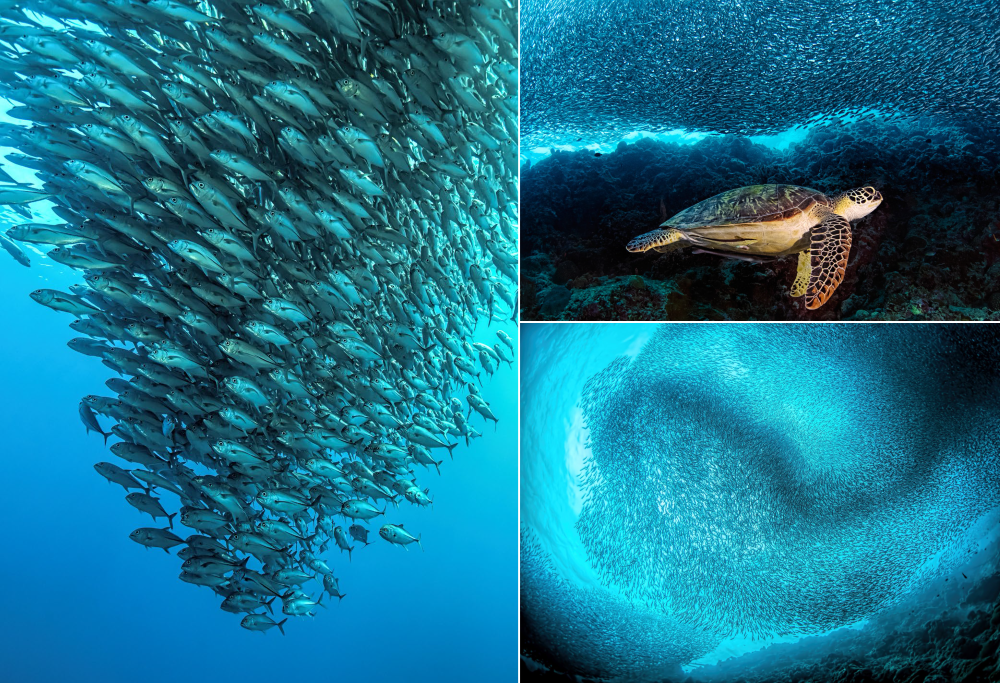 The ADEX 2015 held from 10 -12 April in Singapore provided countless fantastic presentations and speeches about conservation, exploring, tec, free and sport diving, video and photography. We picked one out for you. It’s the presentation about shooting schooling fishes and wide angle in general by our Scubashooters head of jury and admin Henry Jager. We look back to his presentation with a few question and some selected pictures out of his speech.
The ADEX 2015 held from 10 -12 April in Singapore provided countless fantastic presentations and speeches about conservation, exploring, tec, free and sport diving, video and photography. We picked one out for you. It’s the presentation about shooting schooling fishes and wide angle in general by our Scubashooters head of jury and admin Henry Jager. We look back to his presentation with a few question and some selected pictures out of his speech.
“Uncan the Sardines”, please tell us more about this topic, Henry.
I remember very well my first dive with a school of sardines. It was the well-known school at Pescador Island in Moalboal, Philippines back in 2010. Together with the guide from Kasai Village we jumped into the water and found ourselves in 5m depth surrounded by millions of sardines. I was overwhelmed by the great show and I took probably hundreds of pictures.
Back in the resort, opening my laptop was like opening a can of sardines. The pictures were so poor, you could hardly recognise an individual fish or a shape of a school, only a big mash. In my speech I was telling the audience how to get out of this situation, get the sardines out of that can and free them to clear, attractive shots of schooling fishes.
How can we improve our pictures?
Be aware of the following situation: You face small individuals in a huge school. Most of the time they behave chaotically, changing directions often and swim fast. The light situation is not really optimal as a school of sardines can block a lot of sunlight.
When you look at “Sardines Tornado” seconds after the shot the covered the sun and it became very dark. Like when a above water tornado appears.
Best is to use a fisheye lens or a good wide-angle lens. And then go really close to the school. Avoid too much water between you and the school.
Water is like a soft filter, which blurs your picture.
Second, choose wisely your shooting angle. Shoot towards the surface so light can flood through the school.
This separates the individuals.
Shall we use strobes?
The use of strobes is a matter of the situation. Silver fishes are reflecting very well, depending on the position they have. It’s hard to have them even exposed. A lot of pictures I have done with ambient light therefore. But adding strobe light successfully can add depth and structure to the picture.
Using ambient light can create dramatic or glorifying moments. It’s a play with light and shapes. When we look at the picture “Cathedral at Pescador Island” and imagine the wall was not black, the picture would be not partial that dramatic. Adding the sun or the sunrays and the surface makes the subject shine in glory like the example of “Manta Silhouette”. You can apply these general wide-angle techniques also to school of fishes.
When it comes to coloured fishes, or coloured subjects within the composition, (selective) flashlight is needed.
Composition is key! Do you have some advises on that for us, Henry?
When you plan to take pictures of school of sardines or jacks, it’s crucial to plan your dive and plan ahead what you like to shoot. This is not something typically when shooting schools but a general advise. Think of shooting the entire school as subject. Schooling behaviour is very fascinating. it is similar to flocking behaviour of birds. So the shapes of the school are great subjects.
But think also of going closer and picture a group of individuals as part of the school. Freeze the movement or do the opposite: long-term exposure to gain motion blur.
As we already discussed, adding sun and surface is a good idea, too.
Going closer to the school: This is quite difficult!
It can be difficult, especially if you are diving in a group. It’s best to have your own guide and take your time! Improve your skills and approach the subject very slowly.
I have made very good experience by using the rebreather. I learned to use this at the Dive Academy of Kasai Village, a dive resort very near to the sardines. Silent, bubble free approaching helps a lot to get closer. And with the Poseidon MK VI, there is a rebreather for recreational use and one who gives you also time and convenience to concentrate on your subjects.
How much post processing is behind these shots?
I always strive to deliver best quality pictures to the audience. In my honest opinion, post processing belongs to the craft as well as shooting a perfect picture does. There is no way to conjure brilliant pictures out of a mash you brought to the surface. But investing some time for post processing in high quality raw material is very valuable.
Regarding my schooling fish pictures, not much but wisely applied corrections are done. Besides a normal workflow I focus on clarity and separation of the individuals. I have made good experience by improving contrasts not only with the one slider Photoshop provides, but with third party tools which allow up to 4 different setting from micro to high contrasts. This minimises the need of sharpening tremendously and avoids the typical artefacts of over-sharpening.
Sharpening is generally something, which nearly disappeared in my workflow since using the Olympus OM-D E-M1. Like some full frame cameras it has omitted the optical low pass filter, which is of advantage for sharpness.
Let’s look at another aspect. Is it easy to access this specific school of sardines?
The school is located at Panagsama beach at the moment. It’s cruising in depth even open water divers can enjoy. There are many dive operators around whereas I have chosen to dive with Kasai Village Dive and Spa Resort mainly because of their convenient camera facilities, the spacious dive boat and the opportunity to dive with the Poseidon MK VI rebreather. Of course I also enjoyed the vey friendly people and the professional service and dive guides there.
How do you best travel to Moalboal?
From anywhere in the world it is of advantage to have a look at Singaporeair.com for best connections and fares. The hub in Singapore collects people around the globe and provides a convenient trip to Cebu, avoiding the hassle of Manilas airport. From Cebu it’s only a short drive to Moalboal.
Thank you very much, Henry, for answering our questions. More pictures made by Henry Jager you can find on www.conartix-photo.ch
WORDS and PICTURES by Henry Jager


















